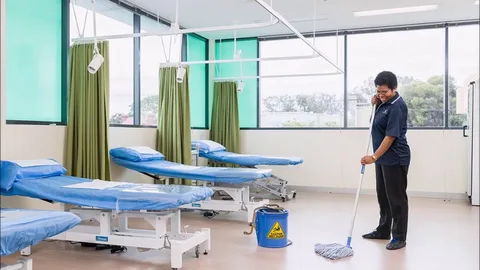Healthcare Furniture Installations: Clean Handling and Infection-Control Best Practices
Healthcare facilities face unique challenges when arranging and installing furniture. Every surface, every material, and every installation procedure must be considered in relation to patient health and staff efficiency. In Albuquerque, organizations that focus on quality installation and professional office furniture installation can support medical environments by prioritizing cleanliness, infection-control measures, and safe handling procedures. A careful approach to furniture setup ensures that spaces remain both functional and protective of those who depend on them.
The Role of Furniture in Healthcare Environments
Furniture in healthcare settings goes beyond aesthetics. Chairs, desks, workstations, and storage units must support the needs of medical staff while accommodating frequent cleaning and disinfecting. In addition, the placement of furniture affects traffic flow, patient privacy, and accessibility. Installation teams must consider how each piece contributes to patient comfort and staff efficiency while also minimizing the risk of contamination.
Material Considerations and Cleanability
One of the primary considerations in healthcare furniture installation is the selection of materials. Nonporous surfaces are preferred, as they resist absorption and are easier to disinfect. Smooth edges, minimal seams, and antimicrobial finishes further reduce areas where bacteria can collect. When installers handle furniture, gloves and protective coverings prevent oils or residues from compromising clean surfaces. Choosing furniture specifically designed for healthcare settings provides a foundation for infection-control protocols that extend beyond daily cleaning routines.
Proper Handling During Delivery and Assembly
The process of transporting and assembling furniture requires strict adherence to clean-handling practices. Delivery teams should ensure that packaging materials are clean and intact upon arrival. Once on-site, installers should minimize exposure to dust and debris by maintaining organized staging areas. Hand tools and equipment must be sanitized before use, especially when assembling items destined for patient care areas. By treating the installation environment with the same attention to cleanliness as a clinical space, professionals reduce risks of introducing contaminants.
Placement for Infection Control and Accessibility
The physical arrangement of furniture directly influences how easily staff can clean and disinfect high-touch areas. Furniture should allow access behind and beneath surfaces, enabling custodial teams to perform thorough cleaning. Avoiding tight clusters of desks or cabinets helps reduce areas where dust and pathogens might accumulate. In waiting rooms, spacing between seating provides both comfort and a healthier environment by limiting direct contact. Installers who understand these considerations create layouts that align with both safety guidelines and staff workflow.
Supporting Specialized Areas
Healthcare facilities often contain specialized zones such as exam rooms, laboratories, and administrative offices. Each requires distinct furniture solutions. Exam rooms may need cabinetry with lockable storage and wipe-clean counters, while laboratories demand chemical-resistant surfaces. Administrative areas still benefit from ergonomic seating and efficient layouts, but installations must remain mindful of the broader healthcare context. Coordinating with facility managers ensures that each area receives furniture tailored to its function while upholding infection-control standards.
Training and Ongoing Maintenance Practices
Installing furniture is only part of a larger cycle of facility management. Staff should receive training on how to maintain surfaces, adjust modular pieces, and recognize wear that might compromise hygiene. Guiding the use of proper cleaning agents, the frequency of sanitation, and the safe adjustment of movable furniture helps extend the life of each installation. Regular inspections by facility supervisors or external consultants reinforce these standards and prevent minor issues from escalating into significant risks.
The Importance of Professional Installation Teams
While healthcare administrators may select furniture based on quality and compliance, the installation phase determines how effectively those pieces support patient care. Professional installation teams understand the significance of infection control and practice disciplined procedures that align with healthcare standards. Their attention to detail in handling, placement, and finishing ensures that furniture meets functional requirements and contributes to a safer environment for patients and staff.
Healthcare environments in Albuquerque benefit from quality installation procedures and reliable office furniture installation when cleanliness and infection control guide every stage of the process. From selecting durable, cleanable materials to practicing safe handling during delivery and assembly, every step shapes the health of the workplace. By working with experienced professionals who respect the unique demands of medical spaces, facilities can provide safe, functional, and comfortable areas for patients and staff alike. To learn more about installation services for specialized healthcare furniture, visit Quality Installers.






